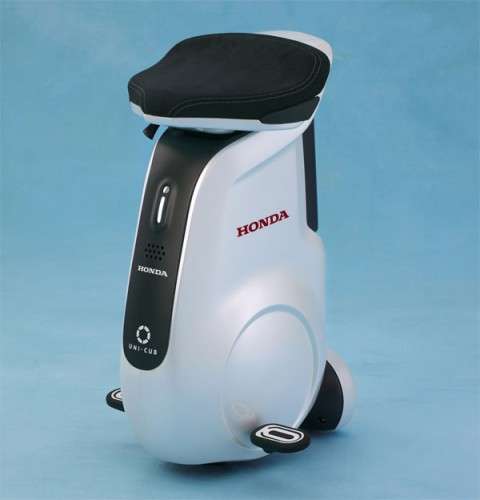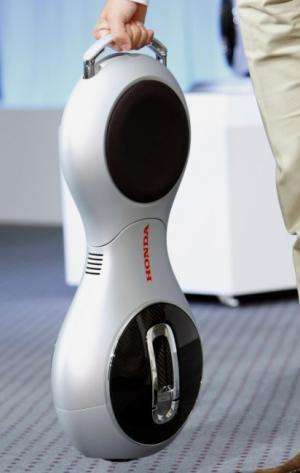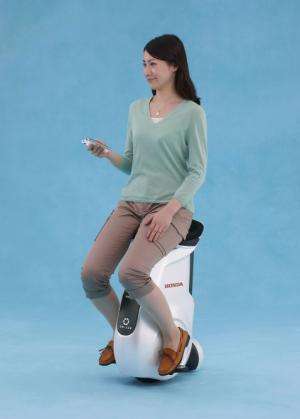Forget Segway: Honda introduces new UNI-CUB personal mobility device (w/ Video) (original) (raw)

Image: Honda
Honda Motor today unveiled the new UNI-CUB personal mobility device. Featuring a compact design and comfortable saddle, UNI-CUB offers the same freedom of movement in all directions that a person enjoys while walking.
Representing the evolution of the U3-X personal mobility device that Honda announced in 2009, UNI-CUB features Honda's proprietary balance control technology and the world's first omni-directional driving wheel system (Honda Omni Traction Drive System). These technologies allow the rider to control speed, move in any direction, turn and stop, all simply by shifting his or her weight. Since the rider can freely move forward, backward, side-to-side and diagonally, he or she can quickly and easily maneuver among other people.
Moreover, UNI-CUB's compact saddle-style packaging makes it easy for the rider's legs to reach the ground and maintains eye-level height with other pedestrians. This configuration promotes harmony between the rider and others, letting the rider travel freely and comfortably inside facilities and among moving people.

Starting in June 2012, Honda will jointly conduct demonstration testing of UNI-CUB with Japan's National Museum of Emerging Science and Innovation. In addition to testing the feasibility of using UNI-CUB indoors, this project will explore the practical applications of the device in a wide range of environments in Japan and other countries.
The balance control technology of UNI-CUB is part of the Honda Robotics family of technologies, which originates with Honda's research into humanoid robots, including the world-famous ASIMO.

Provided by Honda
Citation: Forget Segway: Honda introduces new UNI-CUB personal mobility device (w/ Video) (2012, May 15) retrieved 19 November 2024 from https://phys.org/news/2012-05-segway-honda-uni-cub-personal-mobility.html
This document is subject to copyright. Apart from any fair dealing for the purpose of private study or research, no part may be reproduced without the written permission. The content is provided for information purposes only.